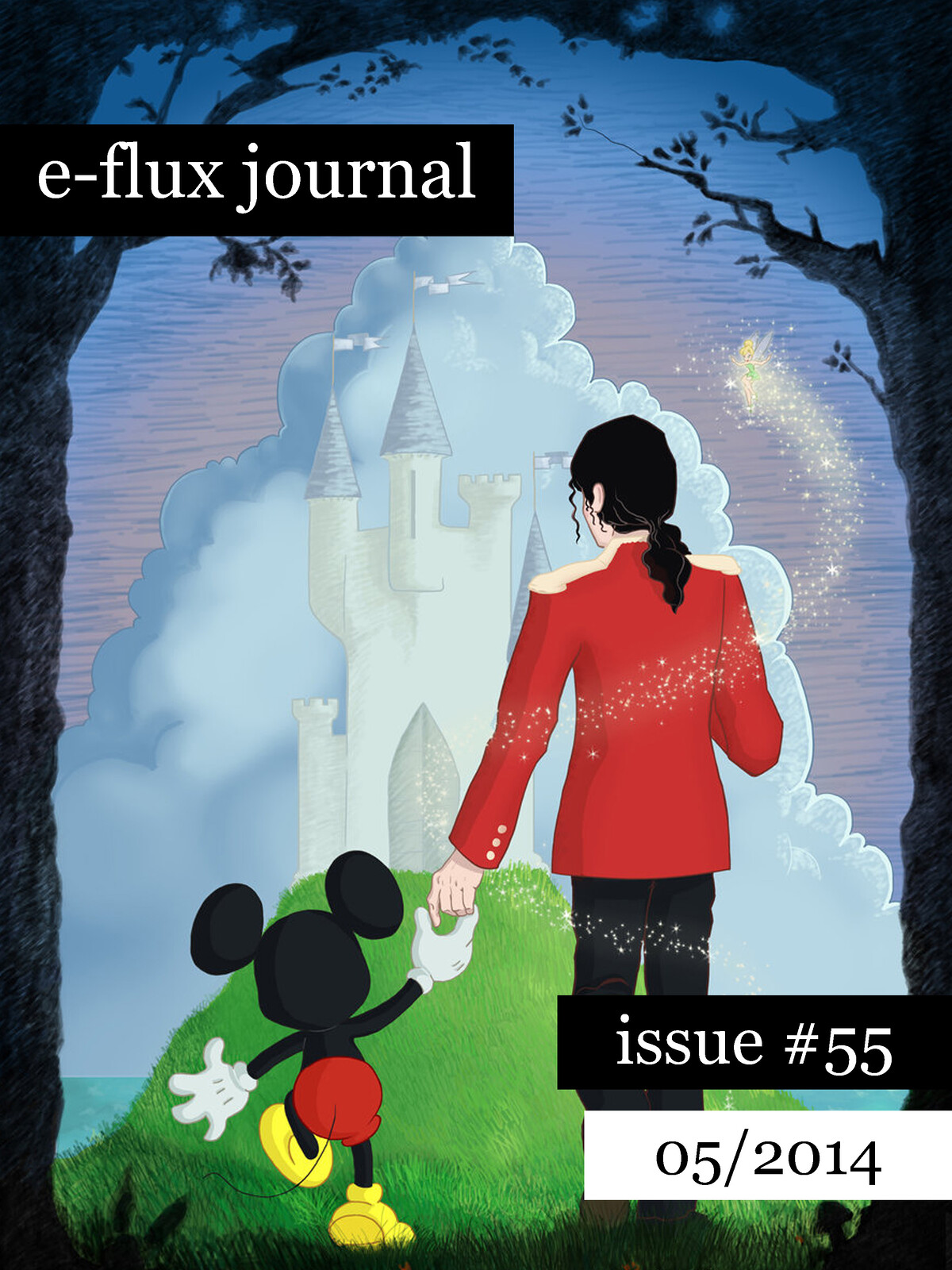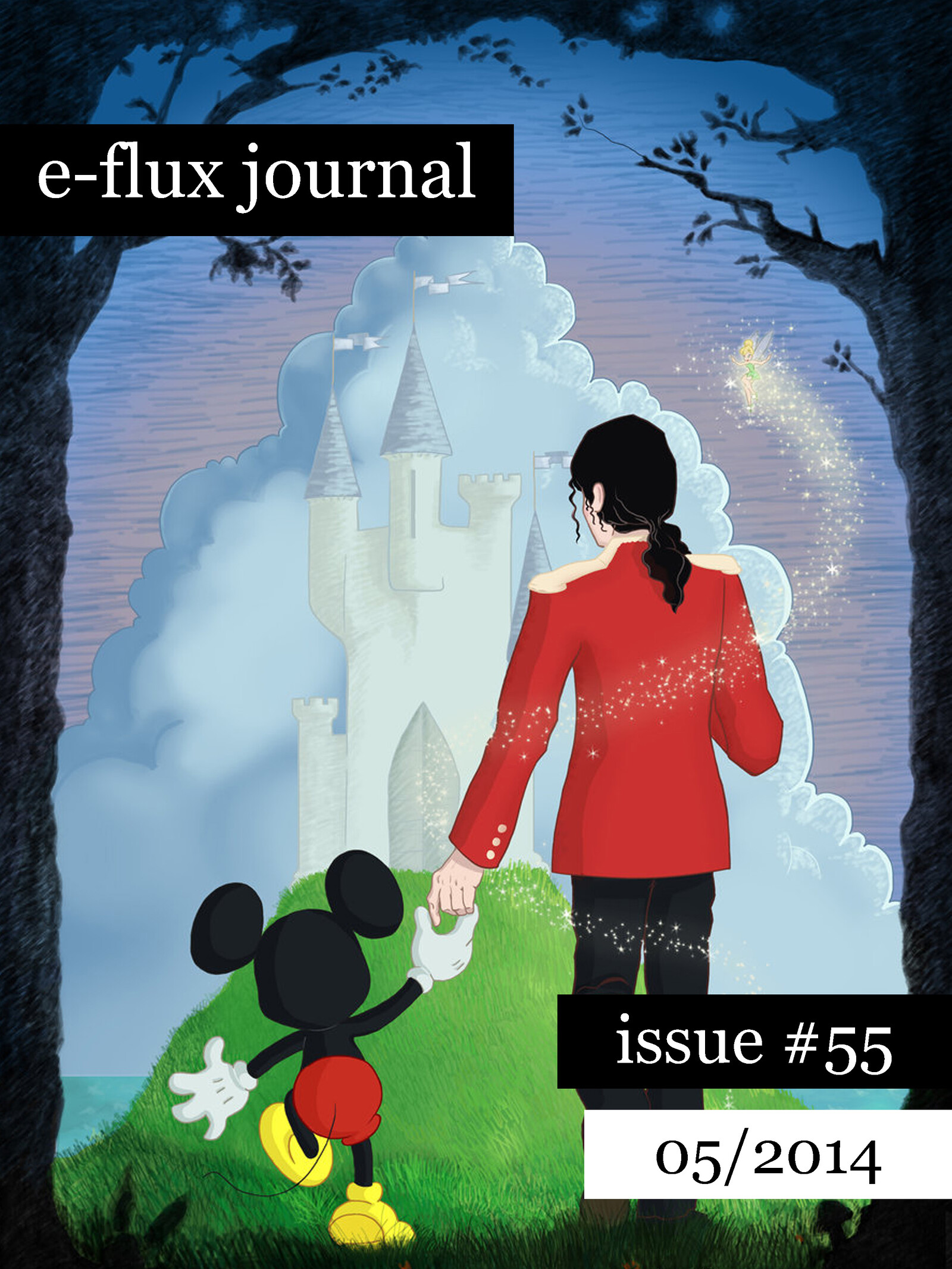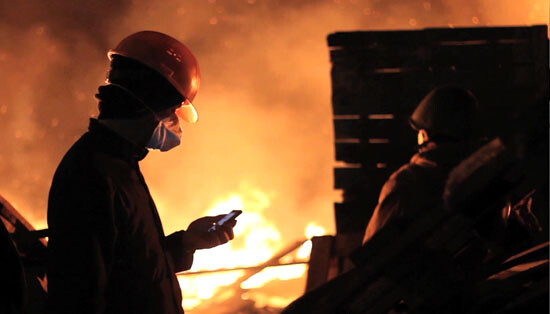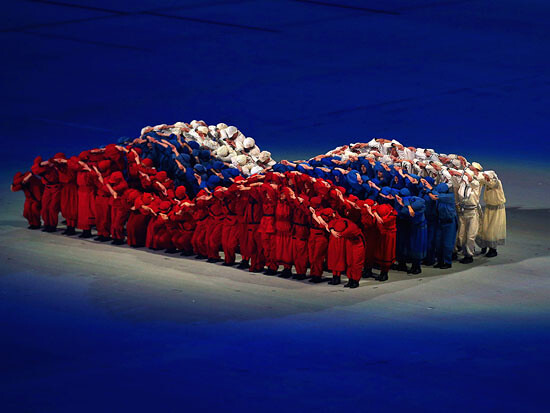1.
On November 21, 2013, Ukrainian journalist Mustafa Nayem posted a call on Facebook to gather at Maidan square in Kyiv, a common site for civic dissent: “If you really want to do something, don’t just ‘like’ this post. Let’s meet at 10:30 p.m. near the monument of independence in the middle of the Maidan.” 1 Nayem called for the protest after the Ukrainian government announced earlier that day that it would not sign a trade agreement with the European Union, and would halt further…
Issue #55
May 2014
With:
Julieta Aranda, Brian Kuan Wood, Anton Vidokle, Oleksiy Radynski, Chus Martínez, Gleb Napreenko, Liu Ding, Carol Yinghua Lu, Jalal Toufic, Luis Camnitzer, and Grant Kester
We are increasingly faced with premodern foundation myths coming from right-wing propaganda and grassroots movements alike. They tell us that some things don’t change and they ask us to think about how original communities are constituted. And we start to wonder whether these original communities are new synthetic fabrications concocted by the limits of communication and exchange, by the failed promises of a liberal democracy or a thriving economy that does not reach people who thought they…
View List
View Grid
8 Essays
May 2014
The octopus is the only animal that has a portion of its brain (three quarters, to be exact) located in its (eight) arms. Without a central nervous system, every arm “thinks” as well as “senses” the surrounding world with total autonomy, and yet, each arm is part of the animal. For us, art is what allows us to imagine this form of decentralized perception. It enables us to sense the world in ways beyond language. Art is the octopus in love. It transforms of our way of conceiving the social…
Ever since Russia annexed Crimea and a quick clampdown started at home, the mass media, social media, and blogs have all been saying one thing: it’s back to the USSR. The Olympics at Sochi are like Moscow in 1980, the trials of the May 6 protesters or of Pussy Riot like the show trials of 1937, and Russia’s invasion of Crimea is the 1968 Soviet occupation of Czechoslovakia all over again. Like all metaphors, such analogies are political judgements, usually informed by liberal images of the…
Socialist Realism was introduced into China in the first half of the twentieth century, and gradually became the main, overarching creative method of the revolutionary era, leading art, literature, theater, and other creative fields for decades. It is often seen as a highly politicized creative model that is the product of socialist, and particularly communist, political views. Over the past three decades, contemporary artists and art discussions often attempted to cast it off as an…
“[Paul Gsell:] ‘Well, then, when in the interpretation of movement he [the artist] completely contradicts photography, which is an unimpeachable mechanical testimony, he evidently alters truth.’ ‘No,’ replied Rodin, ‘it is the artist who is truthful and it is photography which lies, for in reality time does not stop, and if the artist succeeds in producing the impression of a movement which takes several moments for accomplishment, his work is certainly much less conventional than the…
As of next September, Emory College is closing its Visual Arts Department. Dean Robin Forman wrote a letter dated September 14, 2012 communicating this to the faculty. The news recently hit Facebook via an Art and Education announcement of March 2014. I don’t know what exactly happened in the intervening two years, but the consequences of the retrenchment are far reaching.
The dean’s letter is more interesting in what it implies than helpful in what it says. Forman is happy to underline…
I want to thank Ellen Feiss for her thoughtful and honest response, and I’m glad my essay was able to solicit some further reflection on her part. 1
I would also note, again, that I myself have been guilty of most of the problems I identify in this essay (the off-loading of critique to a theoretical authority figure, failure to engage with the work in its specificity, and so forth). Many of the questions Feiss raises about the role of the critic and the complexities of research into…






